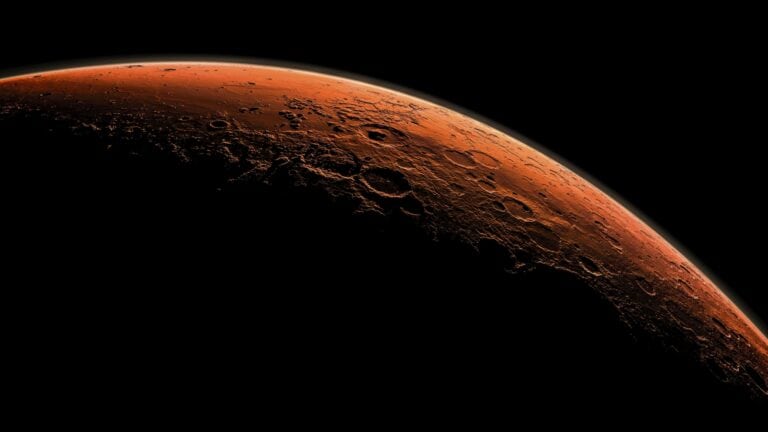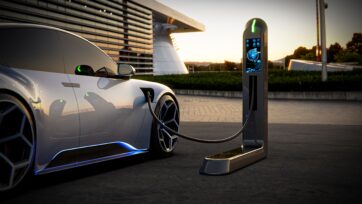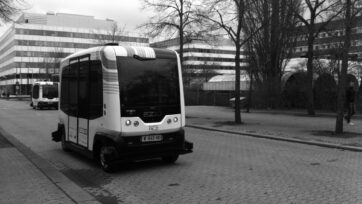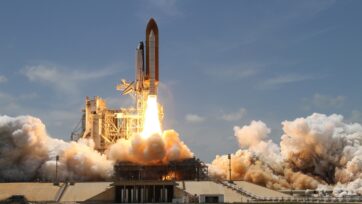Credit: The South Shore Review
In a groundbreaking advancement, Chinese scientists have developed a unique space battery capable of generating electricity from the thin, carbon dioxide-rich atmosphere of Mars. This innovative technology offers a promising solution for powering long-term missions where traditional energy sources are difficult to deploy. The new battery, designed to operate efficiently in Mars’ extreme conditions, is seen as a major step forward for space exploration and could play a crucial role in future missions to Mars and beyond.
The space battery, developed by a research team from China’s Nanjing University of Aeronautics and Astronautics, is designed to function in the frigid temperatures of Mars and can utilize its CO2-heavy atmosphere as a source of power. The battery is based on a solid oxide fuel cell (SOFC) design, which uses the electrochemical reaction between CO2 and oxygen to produce electricity. What makes this development particularly exciting is its ability to generate energy in a low-pressure, low-temperature environment like Mars, where temperatures can plunge to -70°C (-94°F).
Functionality in Extreme Conditions
One of the standout features of this Mars battery is its resilience in extreme conditions. It can not only thrive in Mars’ cold and hostile environment, but it is also highly efficient in converting the planet’s atmosphere into power. According to the scientists, the battery is capable of continuous operation at temperatures as low as -100°C (-148°F), while still producing sufficient power. This opens the door to energy solutions for future human exploration and colonization on Mars, where conventional energy systems, such as solar panels, are less reliable due to frequent dust storms and reduced sunlight.
The battery operates by capturing CO2 from the atmosphere and breaking it down through a chemical process, producing oxygen ions and electrical energy in the process. This design is particularly suited for Mars, where CO2 makes up roughly 95% of the atmosphere. The researchers believe that this technology could provide a steady energy supply for various equipment, rovers, and potentially even habitats for human settlers.
Implications for Space Exploration
With NASA, China, and other space agencies ramping up their efforts to explore Mars, having a reliable and efficient energy source is vital. Power generation on Mars is challenging due to its extreme weather conditions and lack of accessible energy resources. Solar power, a common choice for space missions, is often unreliable on Mars because of frequent dust storms that block sunlight. The development of this battery provides an alternative, steady power source that could drastically improve the sustainability of long-term missions.
The Mars battery is still in its testing phase, but the preliminary results are promising. If successful, this technology could be used not only for Mars missions but also in other harsh environments in space, such as the Moon, or even in deep space exploration missions.
Systems Engineering Perspective
From a systems engineering perspective, the development of the Mars battery highlights the importance of designing robust and resilient systems for space exploration. Space missions operate in extreme and unpredictable environments, where failure of critical components can jeopardize the entire mission. Integrating the Mars battery into a mission architecture requires a comprehensive systems engineering approach to ensure seamless interaction with other subsystems. This involves interface management to ensure that the battery works in harmony with systems like habitat life support, rover power systems, and scientific instruments. The battery’s compatibility with future equipment will also require precise coordination with thermal control, storage, and energy distribution subsystems, ensuring that power is consistently available in line with mission objectives.
A key part of the systems engineering process is the verification and validation (V&V) of technologies in environments that simulate real-world conditions as closely as possible. The Mars battery’s testing phase will include simulations of Martian conditions, and as systems engineers, ensuring these tests cover a wide spectrum of potential scenarios—like prolonged dust storms or temperature fluctuations—is fundamental.
Ultimately, the Mars battery highlights how system integration and the orchestration of various subsystems are critical for the overall success of space exploration missions. This case study emphasizes the importance of holistic systems thinking, where every component, from power generation to communication systems, must be designed with an awareness of how they interact to create a fully operational mission in space. This cutting-edge technology could play a pivotal role in future Mars missions, highlighting how systems engineering fuels the development of breakthrough innovations.
References
South China Morning Post, 2024, ‘China scientists develop space battery that can run on Mars’ atmosphere’, South China Morning Post, viewed 10th October 2024, https://www.scmp.com/news/china/science/article/3281325/china-scientists-develop-space-battery-can-run-mars-atmosphere-paper
Interesting Engineering, 2024, ‘China’s Mars battery creates power from atmosphere’, Interesting Engineering, viewed 10th October 2024, https://interestingengineering.com/energy/china-mars-battery-creates-power-from-atmosphere
Wonderful Engineering, 2024, ‘China Builds Mars Battery That Creates Power from the Atmosphere and Thrives in Icy Cold’, Wonderful Engineering, viewed 10th October 2024, https://wonderfulengineering.com/china-builds-mars-battery-that-creates-power-frm-the-atmosphere-and-thrives-in-icy-cold
Star Drive, 2024, ‘China Builds Mars Battery That Creates Power from Atmosphere & Thrives in Icy Cold’, Star Drive, viewed 10th October 2024, https://www.stardrive.org/index.php/sd-science-news/70138-china-builds-mars-battery-that-creates-power-from-atmosphere-thrives-in-icy-cold
MSN, 2024, ‘China scientists develop space battery that can run on Mars atmosphere: paper’, MSN, viewed 10th October 2024, https://www.msn.com/en-xl/news/other/china-scientists-develop-space-battery-that-can-run-on-mars-atmosphere-paper/ar-AA1rRIgK
Deccan Herald, 2024, ‘China now has a battery that can generate power from Mars’ atmosphere’, Deccan Herald, viewed 10th October 2024, https://www.deccanherald.com/science/space/china-now-has-a-battery-that-can-generate-power-from-mars-atmosphere-3225745
The Star, 2024, ‘China scientists develop space battery that can run on Mars’ atmosphere’, The Star, viewed 10th October 2024, https://www.thestar.com.my/tech/tech-news/2024/10/08/china-scientists-develop-space-battery-that-can-run-on-mars-atmosphere-paper

























